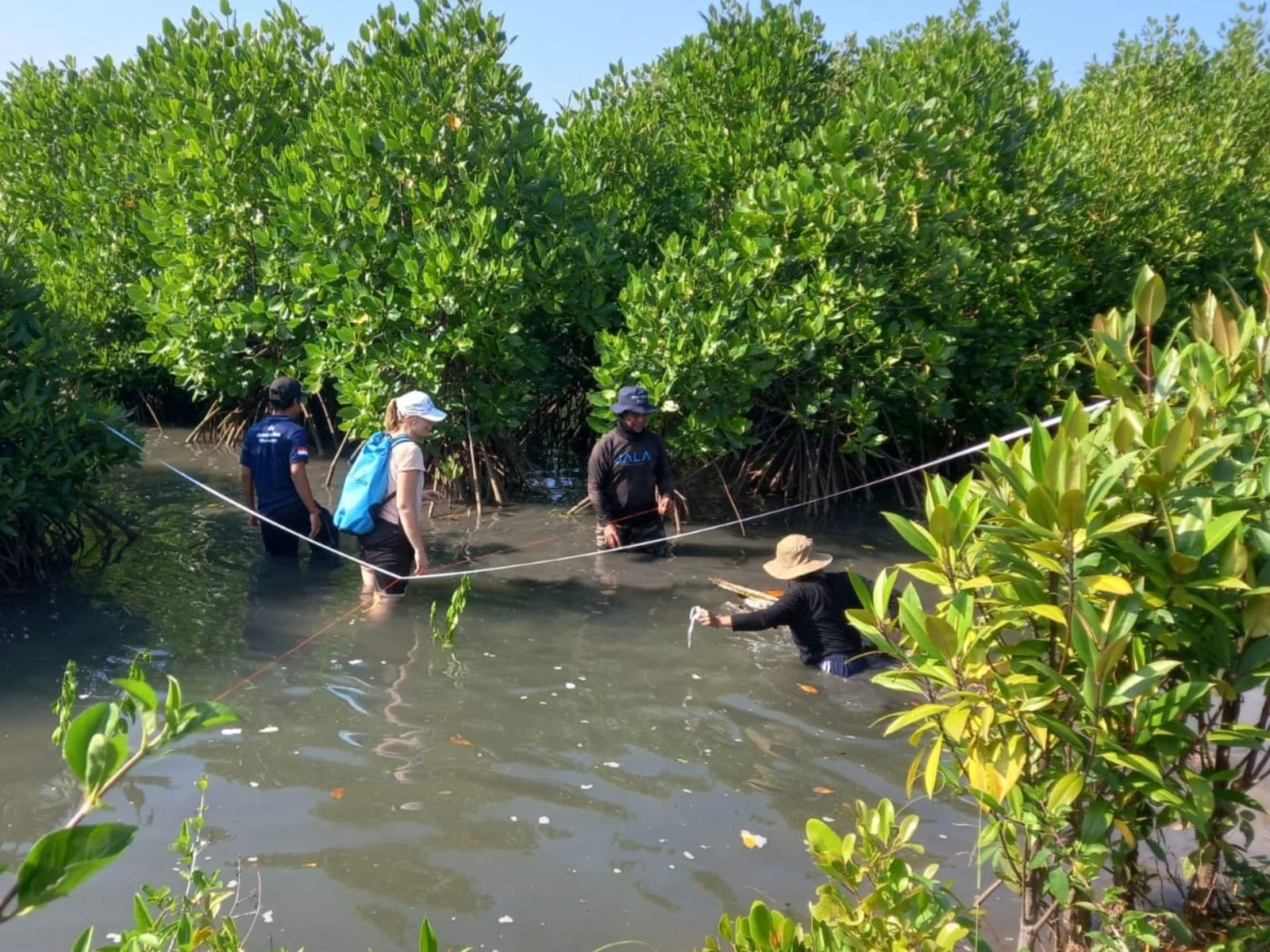#

#
By WARC
January 28, 2025
Mangrove Diversity in Taman Hutan Raya Ngurah Rai, Bali
Mangrove Diversity in Taman Hutan Raya Ngurah Rai, Bali
Indonesia has a significant paleobiogeographic history and a tropical climate that strongly influence its biodiversity. The ecosystems within Indonesia's land and marine landscapes are highly varied and interconnected, forming an archipelago. This uniqueness has earned Indonesia the title of a "megabiodiversity maritime country."
Coastal ecosystems are transitional areas that play a crucial role in the survival of living beings. Mangroves are among the coastal ecosystems with biological potential and provide essential ecosystem services (Karimah, 2017).
Mangrove ecosystems are dynamic because they can grow, develop, undergo succession, and experience changes in zonation. They are unstable because they can easily be damaged and challenging to restore. They are also complex as they serve as habitats for various terrestrial animals and aquatic organisms.
Indonesia: The Largest and Most Diverse Mangrove Area in the World
Mangroves are spread across several countries, covering approximately 19.9 million hectares. Indonesia has the most extensive mangrove forests in the world and the highest mangrove diversity, with 202 types of mangroves, 43 of which are true mangrove species, while the rest are associated or secondary mangroves (Katili et al., 2017).
Due to their strategic location in coastal areas, mangrove ecosystems are often the focus of various development activities, leading to changes in their formation.
The Importance of Mangrove Forests for Coastal Areas
Mangroves are crucial ecosystems for coastal life, helping to protect coastal areas and their surroundings. They help maintain biodiversity, have economic potential from forest products, fisheries, and ecotourism. Therefore, this study aims to assess the mangrove diversity in Taman Hutan Raya Ngurah Rai, Bali.
Indonesia's Mangrove Species Diversity
Mangroves are a rare and distinctive global ecosystem, covering only 2% of the Earth's surface. Indonesia has the most extensive mangrove ecosystem globally and the highest mangrove species diversity. Some species include Avicennia marina, A. officinalis, Bruguiera cylindrica, B. gymnorrhiza, B. parviflora, Ceriops decandra, C. tagal, Rhizophora apiculata, R. stylosa, Sonneratia alba, and S. caseolaris. Minor mangrove species in Indonesia include Acrostichum aureum, A. speciosum, Aegiceras corniculatum, A. floridum, Excoecaria agallocha, Heritiera littoralis, Osbornia octodonta, Pemphis acidula, Planchonella obovata, and Scyphiphora hydrophyllacea, as well as associated species from graminae, epiphytes, pteridophytes, bryophytes, and others.
Mangrove Vegetation Structure
Mangrove plants have unique physiological and morphological adaptations to survive in high-salinity environments and anaerobic muddy conditions in shallow marine waters (Dahuri, 2003). Not all mangrove plants obtain oxygen for their roots from oxygen-containing soil; they grow in oxygen-deficient soils and primarily obtain oxygen from the atmosphere.
Mangrove Forest Zonation
Mangrove vegetation generally follows a zonation pattern closely related to environmental factors such as soil type (mud, sand, or peat), exposure to wave action, salinity, and tidal influences (Dahuri, 2003). In simple terms, mangroves typically grow in four zones:
- Open Mangrove Zone: The area closest to the sea, with slightly sandy substrate, often dominated by Avicennia sp. and associated with Sonneratia sp. in deep, organic-rich mud.
- Middle Mangrove Zone: Located behind the open mangrove zone, primarily dominated by Rhizophora sp., and often found with Bruguiera sp. and Xylocarpus sp.
- Brackish Mangrove Zone: Found along brackish to freshwater rivers, mainly dominated by Nypa and Sonneratia.
- Inland Mangrove Zone: Situated in brackish or nearly freshwater areas behind the actual green mangrove belt. This zone features species like Ficus microcarpus, Intsia bijuga, N. fruticans, Lumnitzera racemosa, Pandanus sp., and Xylocarpus moluccensis. It has higher species richness compared to other zones.
Environmental Factors of Mangrove Habitats
Mangrove forests are halophytes (plants that live in high-salt or alkaline environments) found along coastlines influenced by the highest tides to areas near the average sea level in tropical and subtropical regions.
Shannon-Wiener Diversity Index
The Shannon-Wiener diversity index is used to measure species diversity at each growth stage. The uniformity index assesses community balance, indicating the similarity in the number of individuals across species. The greater the similarity in individual numbers, the higher the balance.The higher the dominance index, the more likely a particular species dominates.
Mangrove Diversity Index of Taman Hutan Raya Ngurah Rai, Bali
Based on the diversity index analysis, the mangrove diversity in Taman Hutan Raya Ngurah Rai, Bali, falls into the medium category. A medium level of community diversity indicates an ecosystem influenced by the presence of species components and vegetation changes.
The community uniformity index of mangroves in Taman Hutan Raya Ngurah Rai, Bali, shows a high level of population uniformity (>0.6), indicating no dominant species at any research station.
The mangrove community in Taman Hutan Raya Ngurah Rai, Bali, has low dominance (station 1) and moderate dominance (station 2). Station 2's moderate dominance is shown by R. apiculata, which has a dominance value of 0.2592, or more than half of the total individuals at Station 2. Meanwhile, Station 1 has a low dominance level, with no dominant mangrove species, indicating a relatively stable ecological condition.
The species richness index of the mangrove community at Taman Hutan Raya Ngurah Rai, Bali, is low. The species richness index is strongly influenced by the number of species found. The low species richness in this area is thought to result from mangrove planting activities that use only a few species.
Based on research by
I Nyoman Y. Parawangsa, Coral Humber, Ni Putu Ayu Wijayanti, I Kadek Riko Adi Antara, et al.
